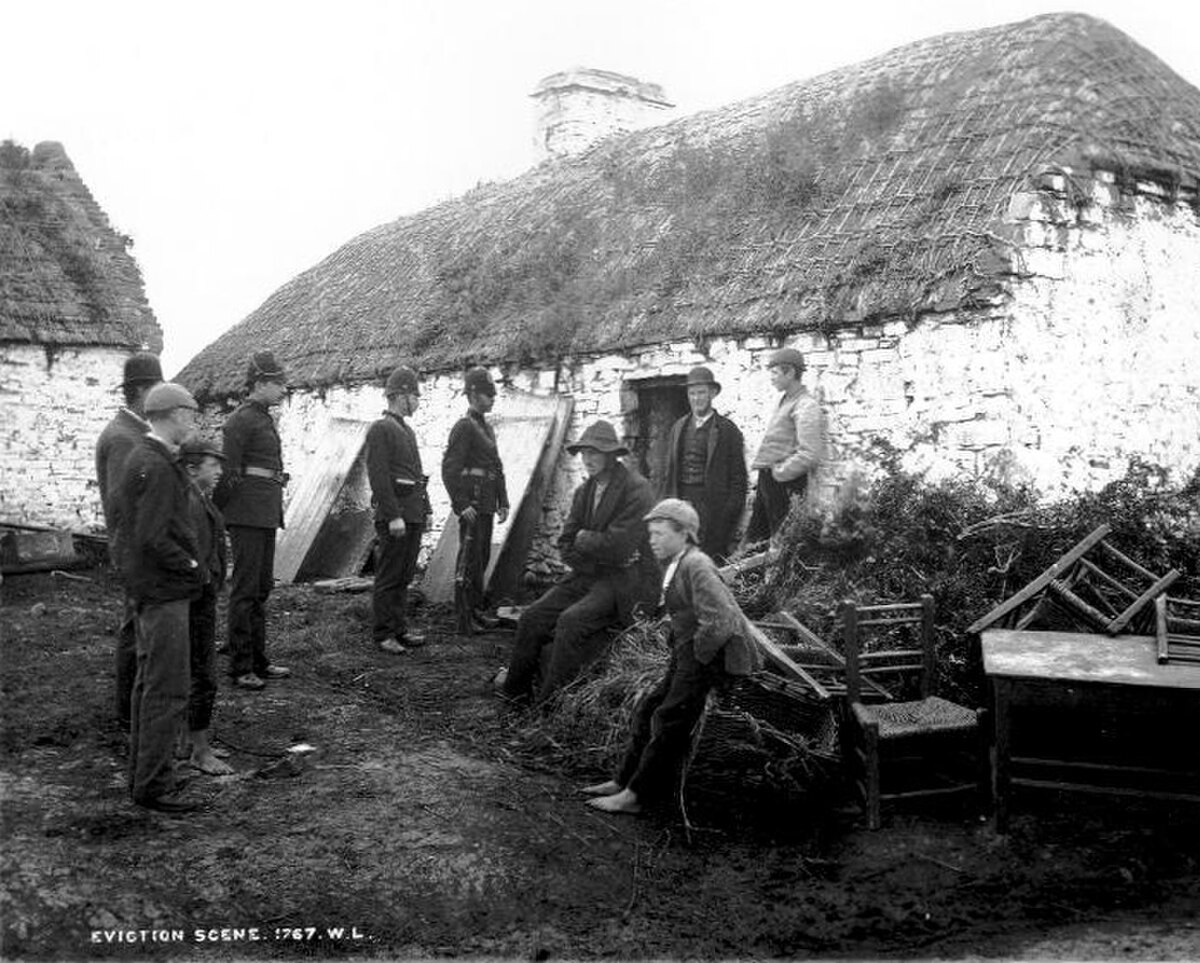
Land War
IrelandIn the wake of the Great Famine, many thousands of Irish peasant farmers and laborers either died or emigrated. Those who remained began a protracted struggle for better tenant rights and land redistribution. This period, known as the "Land War," combined nationalist and social elements. Since the 17th century, the land-owning class in Ireland had consisted mainly of Protestant settlers from England, who maintained a British identity. The Irish Catholic population believed the land had been unjustly taken from their ancestors during the English conquest and given to this Protestant Ascendancy.
The Irish National Land League was formed to defend tenant farmers, initially demanding the "Three Fs" – Fair rent, Free sale, and Fixity of tenure. Members of the Irish Republican Brotherhood, including Michael Davitt, led the movement. Recognizing its potential for mass mobilization, nationalist leaders like Charles Stewart Parnell joined the cause.
One of the most effective tactics employed by the Land League was the boycott, which originated during this period. Unpopular landlords were ostracized by the local community, and grassroots members often resorted to violence against landlords and their properties. Eviction attempts frequently escalated into armed confrontations. In response, British Prime Minister Benjamin Disraeli introduced the Irish Coercion Act, a form of martial law, to contain the violence. Leaders like Parnell, Davitt, and William O'Brien were temporarily imprisoned, held responsible for the unrest.
The land issue was gradually resolved through a series of Irish Land Acts by the United Kingdom. The Landlord and Tenant (Ireland) Act 1870 and the Land Law (Ireland) Act 1881, initiated by William Ewart Gladstone, granted significant rights to tenant farmers. The Wyndham Land Purchase (Ireland) Act 1903, championed by William O'Brien following the 1902 Land Conference, allowed tenant farmers to purchase their plots from landlords. Further reforms, such as the Bryce Labourers (Ireland) Act 1906, addressed rural housing issues, while the J.J. Clancy Town Housing Act 1908 promoted urban council housing development.
These legislative measures created a substantial class of small property owners in rural Ireland and weakened the power of the Anglo-Irish landed class. Additionally, the introduction of agricultural cooperatives by Horace Plunkett and the Local Government (Ireland) Act 1898, which transferred control of rural affairs to local hands, brought significant improvements. However, these changes did not quell support for Irish nationalism as the British government had hoped. After independence, the Irish government completed the final land settlement with the Free State Land Acts, further redistributing land through the Irish Land Commission.
Ask Herodotus
HistoryMaps Shop

Heroes of the American Revolution Painting
Explore the rich history of the American Revolution through this captivating painting of the Continental Army. Perfect for history enthusiasts and art collectors, this piece brings to life the bravery and struggles of early American soldiers.








